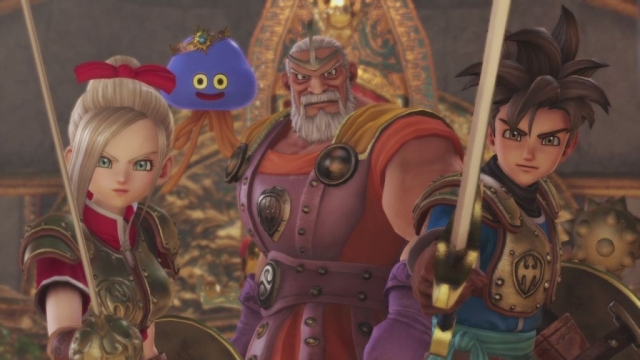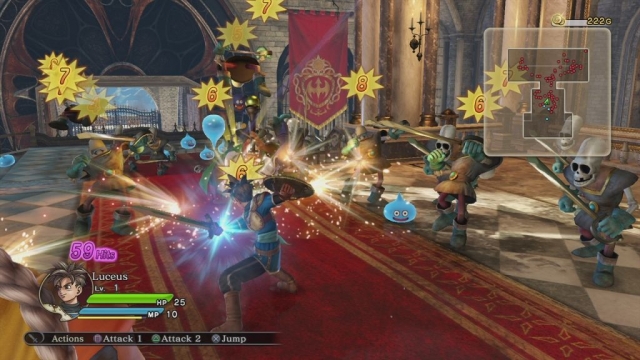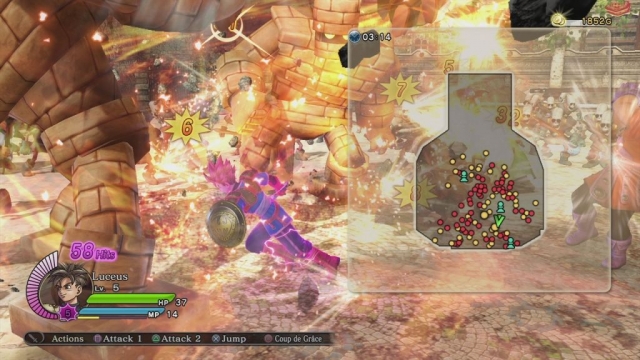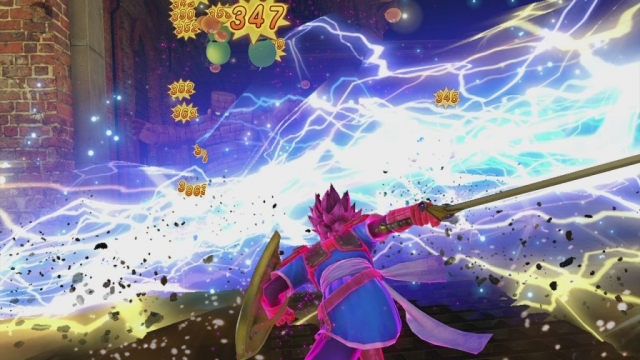Dragon Quest Heroes: The World Tree’s Woe and the Blight Below
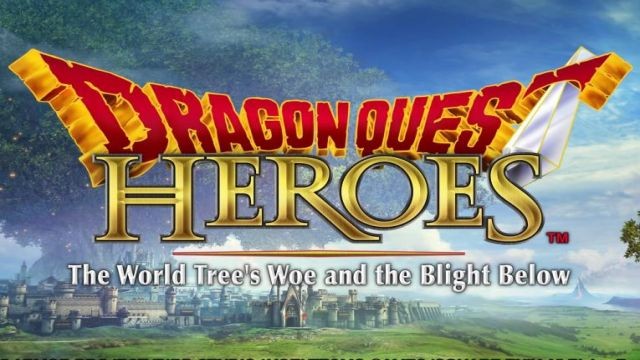
The Dragon Quest franchise has had quite the interesting history. Beginning on the Famicom, it became such a hit that it caused massive work-related absences so its games could be played. In the U.S., it had to be re-titled to Dragon Warrior, and it was even given away with a Nintendo Power subscription. However, North American success eluded the franchise until the PS2 era when Dragon Quest VIII hit and received critical acclaim. Since that point, Dragon Quest’s popularity has been at a reasonably high level compared to its relative obscurity beforehand.
Dragon Quest Heroes: The World Tree’s Woe and the Blight Below changes things up big-time. Instead of being a traditional JRPG, or even an action RPG like the DS Dragon Quest Heroes game, it’s a mix of Dynasty Warriors and Dragon Quest. Much like Hyrule Warriors, you take a classic series and then blend it with something else and hope for the best. Dragon Quest’s olde English dialict makes the transition here, and the normally slower-paced gameplay has been greatly sped up.
In theory, a concept revolving around just having a small party battle tons of enemies at one time would have no substance. However, there’s a lot of depth underneath the surface. Within an hour, you’ll realize that being able to switch characters in real-time is a huge godsend. Sometimes, you’ll have one character overwhelmed while others are only battling a few. Generally speaking, you want to let the CPU only face a few, and then tackle the larger swarms on your own.
The core games gives you some Square button combos that you can blend in with Triangle button magic attacks to do even more damage. Each of the main playable characters plays pretty much the same – with the male character Luceus and Aurora, the female, just being fire and ice-powered opposites. Each of them has a healthy mix of physical attacks for short-range combat, long range magic, and then you can mix and match those attacks. Playing as the super-powerful king is also fun too, and you’ll gain some new characters throughout the adventure too.
Beating enemies is nice, but there’s more to it than that – including a bit of tower defense ensures that you’ll always be on your toes. These sections involve you protecting a giant generator while battling a slew of enemies. You’ll topple mini-bosses and then need to make sure that you don’t let either the boss or the goon squad attack the generator too much. The in-game camera causes some issues with this though, as it can fly around a bit too much even with using the right stick to try and control it.
Luckily, losing is never too frustrating. You might lose that battle, but you’ll retain all of your XP and loot gained – so all you lose is a bit of time as you redo the battle and perhaps re-arm your team. Between battles, you’re definitely reminded of the franchise’s JRPG origins. You can upgrade your characters’ weapons, equip armor, and power up your team to new heights. You’ll want to spend money on upgrades whenever you’re able to because you can’t just redo fights to farm XP and money.
Your best bet for doing that would be to lose and then just keep re-fighting battles until you win. Of course, that can get old since they’re just the same thing over and over again. The best thing to do is blend a bit of farming with selling old equipment. Selling materials can also be useful – especially if you’ve got a solid lineup of alchemist creations at your disposal already. If you don’t, then just re-fight some battles until you get some good items either as drops from enemies or the potted plants that litter the environments.
Another great tactic is to mix up your attacks and build up your rage meter right before battling big enemies. Unleashing your rage meter with Circle enables your basic and magic attacks to do more damage, while another press of Circle unleashes pure Hell onto your opponents as you wreak havoc with a big magic attack that will rid your screen of small enemies and take a huge chunk off of mid-bosses and regular ones as well.
Dragon Quest Heroes gets a lot right, but it has way too many annoying parts about it. Your aide Healix can die in a fire. He’s got one joke to him – adding “goo” to anything he says in as many ways as possible, and it’s annoying as could be. There’s also way too much hand-holding for simple things like leaving camp – where you’re told after every single battle to make sure to be equipped for the next one. It’s very beginner-friendly, but there isn’t an option to skip it or even speed up the occasionally-slow dialogue that can drone on for a while. It’s one thing to make this game kid-friendly, but if you’re over the age of 12, the game basically playing itself at times can get tiresome.
It’s a tough tightrope to walk when you factor in that this is taking an existing IP and doing something completely different with it – but it still can be taken too far. Making a lot of these things optional, and definitely including the ability to completely turn off Healix’s prompts, would help things a lot. As annoying as Navi could be in Ocarina of Time, she was never this bad – and her dialogue was never so heavily-reliant on puns which beyond groaning through in text form, you get to hear over and over again.
Similarly, the over-abundance of menus and banter gets old quickly. Every between-battle section is the same and you can’t skip through these things – only the important things like cinematics. Speaking of which, they tell the story fairly well, but it’s not a very compelling one. A mysterious evil-doer has poisoned the minds of the town’s monsters, and once you either kill them all or get some to join your side temporarily, your party decides to do this for the rest of the world. It’s a very linear story, and isn’t compelling in part due to the voice acting.
The music is stellar and really evokes the fantasy setting perfectly. The voice acting ranges from good for the king to fairly annoying for the playable characters. The lip-syncing is also off for everything since they went with a “dubtitle” approach instead of synching things to the dialogue. It makes the English presentation seem secondary, and while that can be corrected a bit by going with the Japanese audio and using subtitles, it’s still disappointing to see such poor voice acting prevalent in a modern-day video game.
Dragon Quest Heroes looks fantastic for the most part. The character models are richly-detailed and the game never slows down even with a ton happening at one time. You could have spells going off around you while enemies swarm in and even have a mini-boss thrown in there too. Occasionally, you’ll get some clipping where characters’ body parts kind of disappear. It’s a bit freaky during boss battles as they sometimes appear to be dismembered, but it goes away with a swift camera move more often than not. Animation is as fluid as it should be – good enough to look realistic, but not so time-consuming as to throw off the flow of combat.
Dragon Quest Heroes overachieves in some regards, but falls short in a few too many to be a must-buy. Unless you’re a long-time fan of the franchise, or absolutely adore the Dynasty Warriors gameplay formula, this is more of a rental than a full-on purchase. There’s more to the gameplay than may initially meet the eye, but there are a lot of annoying hiccups in the flow that make it more of a chore than a fun game to play at times – and hurt the experience as a whole quite a bit.
Reviewed By: Jeremy Peeples
Publisher: Square Enix
Rating: 74%
——————————————————————————–
This review is based on a retail copy of Dragon Quest Heroes: The World Tree’s Woe and the Blight Below for the PlayStation 4 provided by Square Enix.
 Game Over Online
Game Over Online